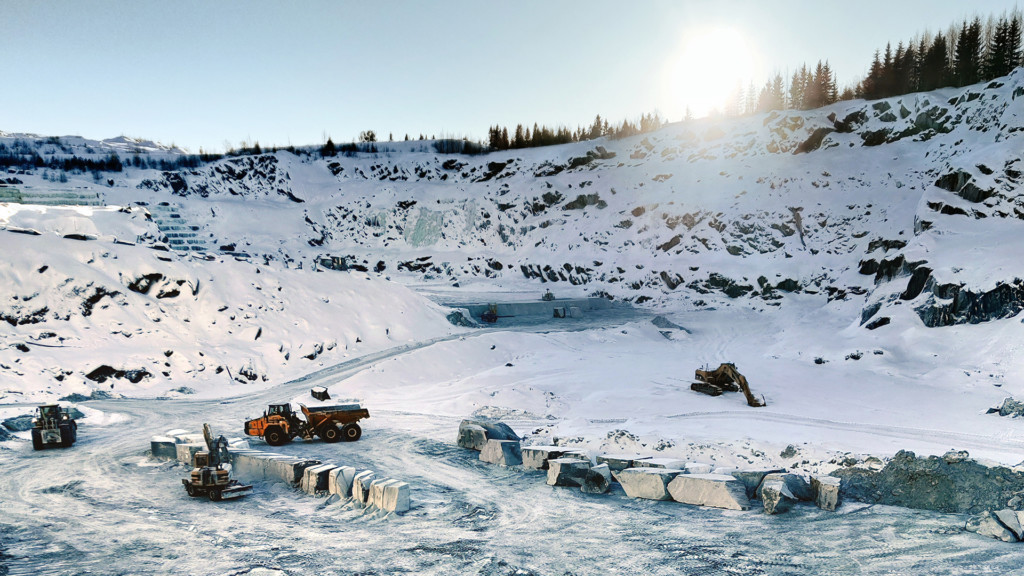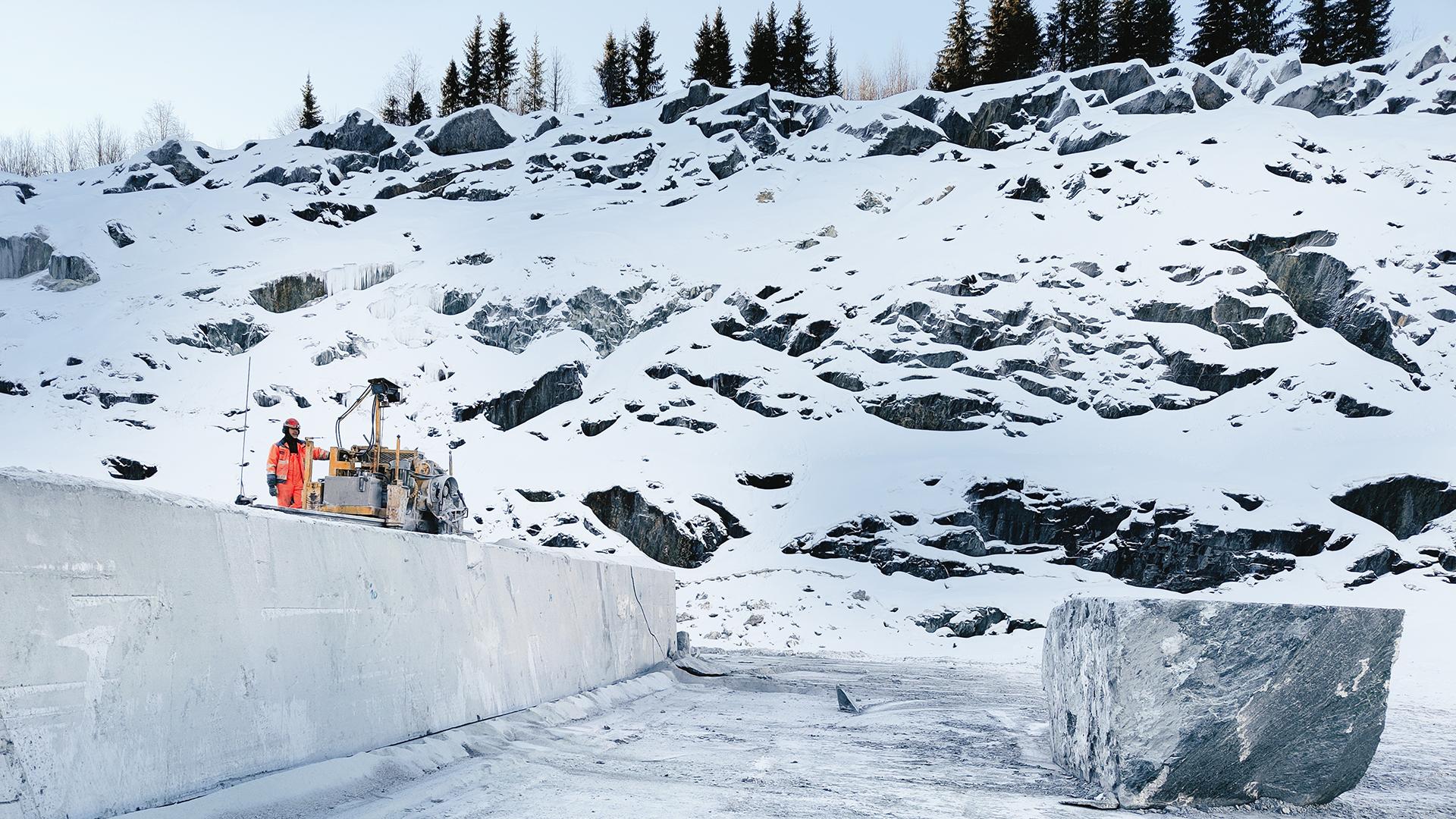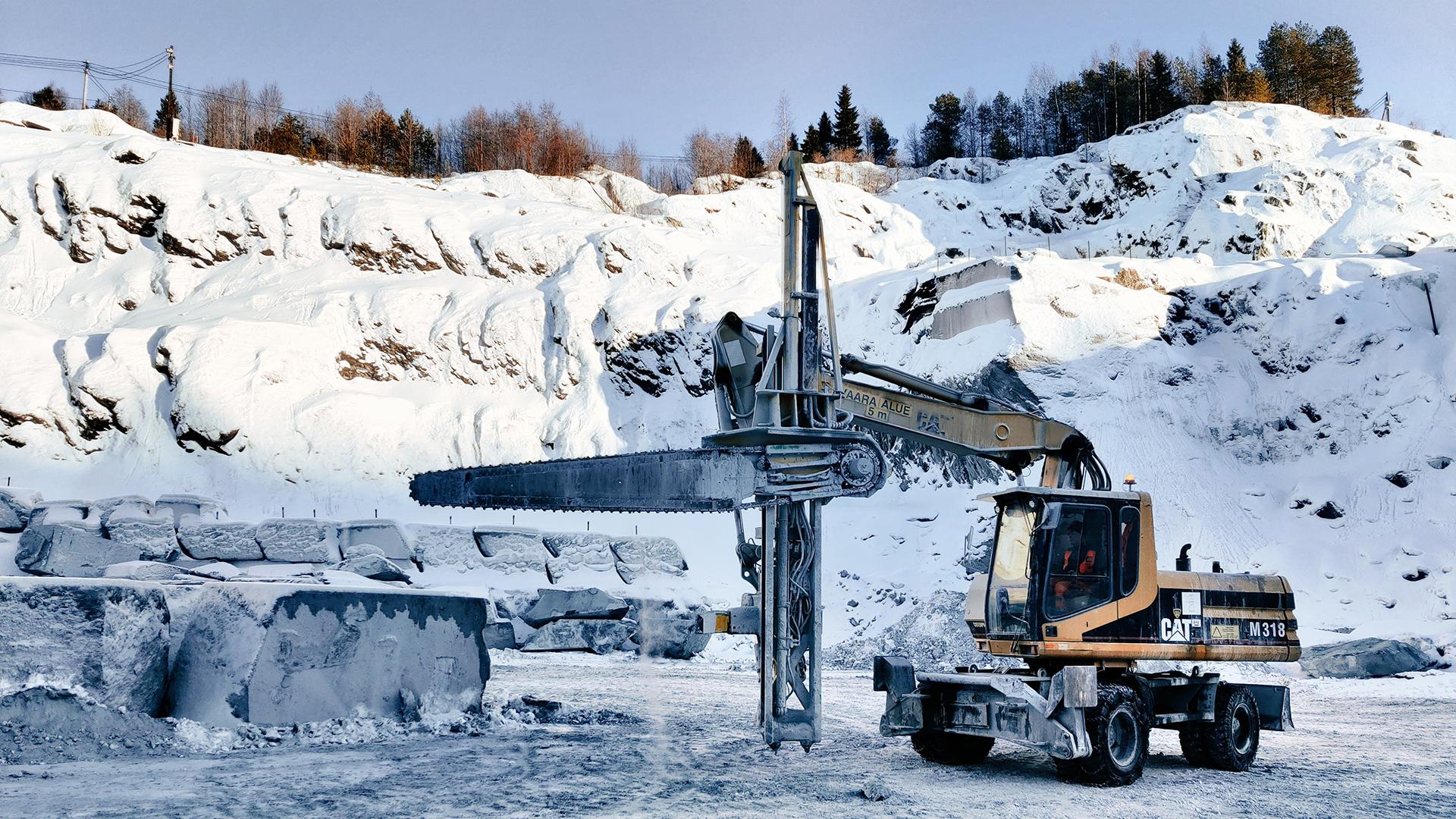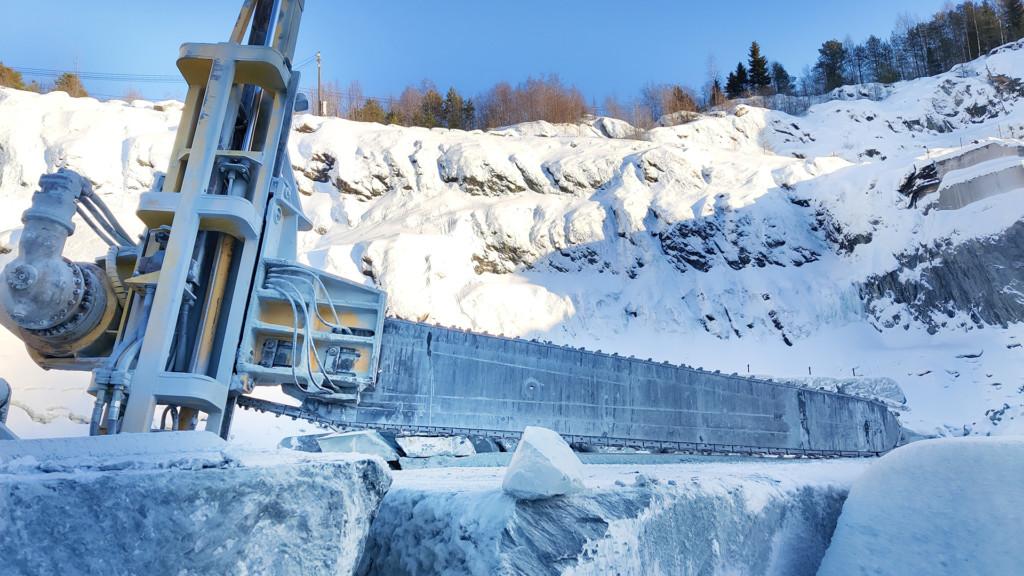
Quarried locally
Our soapstone quarries are located close to our production plant, which means the heavy material can be transported quickly and with a small carbon footprint from its source to the production line. Not only is our entire production chain, from the source of the material to the final product, designed with sustainability in mind, but the product itself is constantly tested. The Geological Survey of Finland (GTK) systematically tests and analyses soapstone, which gives us verified data on the raw material and enables us to guarantee high-quality products made from safe and tested material for our customers.


